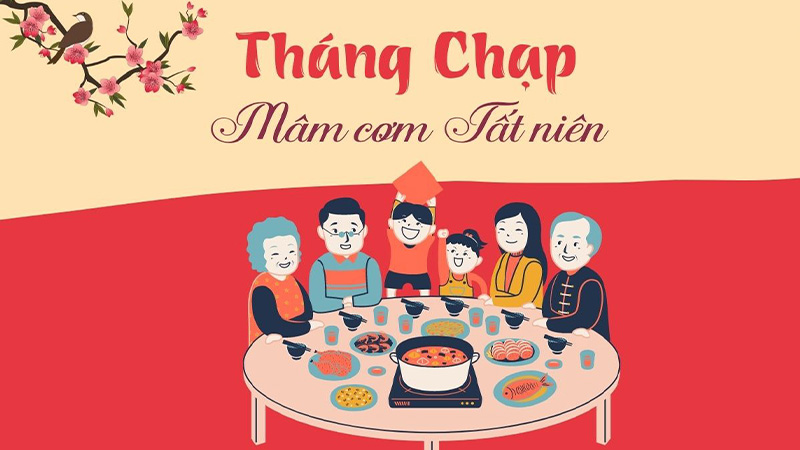December is one of the busiest months of the year as people rush to complete their work and shop for the Lunar New Year celebrations. You may hear people refer to this month as the “12th month,” but do you know its other names and their origins? Let’s explore the reasons behind these intriguing names.
1. Why is the 12th Month Called the “Month of Củ Mật”?
 Why is the 12th month called the “Month of Củ Mật”?
Why is the 12th month called the “Month of Củ Mật”?
While some may think that “củ mật” refers to a type of vegetable, it is actually a Sino-Vietnamese word. The word “củ” in “củ soát” means examination or control, while “mật” signifies secrecy and caution. Together, “củ mật” conveys the idea of careful control and scrutiny.
The 12th month earned the name “Month of Củ Mật” due to the heightened risk of theft during this period in the past. As it was the month of harvest and people were busy preparing for the new year, thieves took advantage of the general preoccupation to carry out their misdeeds.
Thus, referring to the 12th month as the “Month of Củ Mật” serves as a reminder for people to be vigilant and cautious to minimize any mishaps or losses during the hectic end-of-year period.
 The “Month of Củ Mật” is a time to be cautious and vigilant against theft.
The “Month of Củ Mật” is a time to be cautious and vigilant against theft.
Additionally, “củ mật” also carries the implication of being careful with fire. In the past, the end of the year was marked by numerous festivities and feasts, and the dry weather increased the risk of accidental fires.
Nowadays, the 12th month remains a busy time as people rush to finish their work and attend numerous year-end parties, making it a period prone to various mishaps, such as traffic accidents and food poisoning.
2. Why is the 12th Month of the Lunar Calendar Called the “12th Month”?
 Why is the 12th month of the lunar calendar called the “12th Month”?
Why is the 12th month of the lunar calendar called the “12th Month”?
The origin of calling the 12th month the “12th Month” can also be traced back to ancient Chinese culture. The word “Chạp” is a variation of the word “Lạp” in Chinese, which refers to a ceremony to worship the gods at the end of the year in ancient China. This month was also known as “Lạp Nguyệt,” with “Nguyệt” meaning month.
The term “Lạp” is also associated with the concept of “lạp mả,” which means visiting and tending to the graves of ancestors in preparation for the Lunar New Year. Additionally, due to this custom, “Lạp” also signifies the year-end party.
 The “12th Month” is also associated with the year-end party and ancestral worship.
The “12th Month” is also associated with the year-end party and ancestral worship.
Due to cultural influences between Vietnam and China, the 12th month in Vietnamese culture is also marked by numerous worship rituals and is often referred to as “giỗ chạp.” The Vietnamese also attach great importance to tending to their ancestors’ graves, and the end of the year is a time when people visit and clean their ancestors’ resting places, inviting them to return home for the Lunar New Year celebrations.
Furthermore, the word “Lạp” has another interpretation, which is “meat.” As people stock up on food to prepare for the winter and the upcoming Lunar New Year, meat is considered a valuable and essential item in every household during this month.
We hope that these explanations about the significance of the “12th Month” and the “Month of Củ Mật” have provided you with a deeper understanding of the importance of this month in preparing for the Lunar New Year celebrations.
The Origin and Meaning of Lunar New Year: Exploring the Celebration
 Lunar New Year: Exploring the Celebration’>
Lunar New Year: Exploring the Celebration’>The vibrant and joyous celebration of Lunar New Year is a festival steeped in tradition and held dearly by the Vietnamese people. This article will explain to you the rich history and symbolism behind this important event – Tet!





































